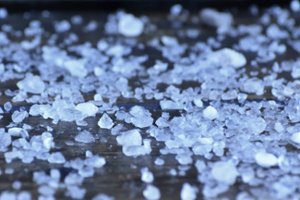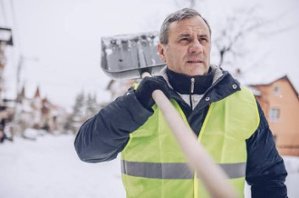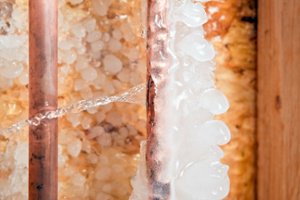
by Flagship Staff | Feb 26, 2019 | Blog
Just when you think you’ve seen your last snowfall or cold spell, Mother Nature plays another trick on you. Winter weather can make it difficult for our cars to run efficiently or even run at all.
I’ve had my fair share of car repairs over the last several months. While I like my auto repair garage, I’ve seen it enough. On my last visit, Jeff told me that winter weather does crazy things. Things that never leaked before, might start. Batteries, alternators, and other components work very hard during winter months and take on significant wear and tear.
Here are some things to watch on your car.
1. Battery and alternator. It’s common knowledge that it takes a good battery to start your car during the winter months. However, what many people don’t know is that the alternator plays a key role in maintaining proper battery health. The alternator is like a mini generator. The purpose of it is to recharge your battery after each start of your car. On a regular winter day, your alternator may need up to 20 minutes of drive time to recharge it. But on an extremely cold day, it may need even more time.
Recently, I had my daughter Hannah’s car towed because she was stranded on a Saturday night. Thank goodness I purchased roadside assistance through my West Bend policy. It made the situation less stressful.
Unfortunately, I didn’t know the warning signs for a bad alternator. While Hannah told me what she was seeing on her dashboard, I didn’t think much about it. Here are some warning signs:
Battery image. If you see a battery image on your dashboard, this doesn’t mean you have a battery problem. It’s an alternator problem. Depending on the severity of the problem, the light may flicker on and off. Consider shutting down some systems in your car that may not be necessary, such as heated seats. When this light comes on and stays on, it means it’s having a tough time meeting your vehicles electrical needs.
Dim or flickering lights. Because the alternator can’t keep up with your car’s electrical needs you may see dim or flickering headlights. You may also see multiple dash lights flickering on and off. Hannah told me her dashboard was going crazy. She said, “Dad, my dash is lit up like a Christmas tree.” After she told me this, I gave her the worst advice ever, which was turn off the car to see if it resets. The car was dead.
If you have a fairly new battery and suddenly it’s dead, you may have an alternator problem.
Weird sounds coming from under the hood. A growling or whining sound may indicate there is a problem. I did hear a whining sound, but I just attributed it to the fact it was 50 degrees below zero with the windchill.
2. Tires and other components. Unfortunately, it’s tough for road crews to keep up on repairing potholes. It seems like they pop out of nowhere. Unsuspectingly hitting a pot hole can be scary and expensive. If you’ve recently hit a pothole, here are some things to watch for:
Tire puncture;
Bent rims;
Suspension damage;
Steering out of alignment; and
Exhaust system damage.
For tips on how to avoid potholes, check out my blog, “Watch out for that pothole! 5 tips to avoid them.”
Please note that cold air can cause tires to lose tire pressure. It’s dangerous to drive with under-inflated tires. Under-inflated tires can lead to tire failure, poor handling, and buying tires more frequently. Consider checking your tires on a regular basis with a tire gauge or keep an eye on your car’s monitoring system.
3. Fluids. Fluids such as oil and antifreeze are critical for our cars. As temperatures drop, fluids thicken making it difficult for your car to run efficiently. Mysterious leaks due to cold weather can cause a critical failure to an important component of your car. If you find fluid on your garage floor, pay attention to what color it is.
Red – transmission or power steering fluid
Green – antifreeze
Blue – windshield washer fluid
Brown – motor oil or brake fluid
Based on the make and model of your car, colors may vary.
4. Windshield Wipers. Windshield wipers are a crucial component on your car. Especially during the winter months when experiencing snow, sleet, freezing rain, and rain. Cold weather can cause the rubber to become brittle and tear or crack.
When cleaning your windshield, use caution when scraping and cleaning around them. If your wipers are stuck to the windshield, consider turning your defrost on to loosen the ice and snow. A torn wiper blade can make for a miserable commute.
Lastly, consider changing windshield wipers every 6-12 months. I recently bought a pair for my daughter’s car from an auto parts store and they installed them for me.
To learn more about the different types of windshield wipers, check out my blog, “No more mistakes when replacing windshield wipers.”
5. LCD screens. If your car is equipped with an LCD screen for the infotainment system cold weather can cause it to run slow or not appear at all. This recently happened to my daughter’s car. Unfortunately, there’s nothing you can do other than let your car warm up. I must admit, it’s difficult to turn on the heat when nothing appears on the screen.
6. Paint. Road salt does a great job keeping our roadways clear and safe for drivers. However, it can be very damaging to your car’s paint and underlying metal components. Certain types of salt can cause paint to chip. Salt can attack dents and dings and cause exposed metal to rust more quickly. Depending on our weather, my wife and I try to wash our cars on a weekly basis. We have an affordable car wash that does a good job cleaning our cars. The other benefit of washing your car regularly is it keeps the salt residue off your jacket and pants.

by Flagship Staff | Feb 19, 2019 | Blog
With several weeks of winter left, and then the transition to spring, salt could still play a big part in keeping your property safe. Part of being prepared is knowing the specifics of the deicers you’re using on your driveway or sidewalk. Each type of deicer has different melting properties and uses. Consider all factors when choosing the product best for you.
The most common types of ice melts on the market today are chloride based.
Sodium chloride, most commonly known as rock salt, is the most frequently used type of salt, probably because of how inexpensive it is. Working in temperatures as low as 20 degrees, this isn’t the most effective and it’s known to leave a white power behind.
Calcium chloride is probably the most effective salt-based product, because it works up to -25 degrees. Be careful when using calcium chloride. It’s known to cause harm to plants and grass and sometimes it even damages concrete if used excessively.
Potassium chloride has been deemed as the safer chloride-based option, working in temperatures as low as 12 degrees. It doesn’t work as well as other melting products, but people pick this product because it doesn’t harm vegetation.
Looking for products that aren’t chloride based?
Sodium acetate works well in colder temperatures, as low as zero degrees. Its most common use is on airplane runways.
Calcium magnesium acetate works in colder temperatures as well. Along with sodium acetate, this product is considered environmentally friendly and has a lesser chance of harming animals or vegetation.
Ethylene glycol works in extreme cold, up to -58 degrees. However, this product is incredibly harmful for people and animals. Use extreme caution with this product, it can be deadly if ingested.
A huge concern when picking salt is knowing what is and isn’t safe for children and pets.
There really isn’t a fully “safe” salt choice; all salts are harmful if ingested and can cause skin irritation. Even if not ingested directly, there are other ways salt can be ingested. Remember as you’re spreading salt out, you may also be getting it in nearby snow which your children or pets may decide to eat.
Many salts say they’re “pet friendly,” but that isn’t always the case. It’s extremely important to look at labels when selecting salt – try and find a product that doesn’t have any warning labels on it. If something isn’t safe for humans, it isn’t safe for pets either. Propylene Glycol based products are generally the safest product to have around pets.
If you’re concerned about your children or pets, look for products that don’t contain salt or chloride. These are less harmful.
Try mixing salt with some sand to decrease the amount of salt you’re using this winter. Although sand won’t melt ice like salt does, the combination will help increase traction.
As always, it’s important to read warning labels and follow manufacturer directions when using these products. When picking a deicer, take all factors into consideration and pick the product best for you and your family. There’s no such thing as being too safe, always wash your hands after using deicers and keep a close eye on children and pets.

by Flagship Staff | Feb 12, 2019 | Blog
After a quiet December, Mother Nature has really created a ruckus in Wisconsin the last several weeks. From significant amounts of snow to extremely cold temperatures, winter’s back!
If you’re fed up with shoveling, it may be time to hire a snow removal service for the remainder of the season. If you’ve recently hired a snow removal service or plan to, you should be aware of the potential risks.
Accidents happen, especially in slippery, icy conditions. What if their worker slips and falls on your driveway or causes damage to your home or to property of others? You might be held responsible. That’s why it’s important to have the proper insurance, for both you and the company, to ensure coverage for potential losses.
Here are some things to do to ensure you’re both protected:
1. Consider requesting a copy of their current Certificate of Insurance. You’ll want to look for two types of coverages:
Liability insurance covers property damage and injuries caused by their workers.
Workers’ compensation insurance provides payment to injured workers for lost wages and medical services, regardless of who was at fault.
If they can’t provide proof of insurance, don’t hire them!
2. Verify that they’re bonded.
Bonding protects you if they fail to complete a job or fail to meet other financial obligations, such as paying for damage the worker caused to your property.
To determine whether your snow removal service is bonded, ask for a bond number and certification. You should take extra precautions to ensure that both the bond and the license are up to date.
3. Make sure they bring and use their own tools and equipment.
If you offer your own equipment to them, you assume the responsibility to ensure the equipment is suitable for the job, is in safe condition, and they’re trained to use it.
4. Keep a copy of all paperwork.
Include proof of licensing (if required), bonding and insurance, the contract, invoices, proof of payment, and all letters and e-mails.
Winter can be a long season and who knows what surprises Mother Nature may have in store. Keep your surprises to a minimum this winter and be prepared if you hire help.

by Flagship Staff | Feb 5, 2019 | Blog
Here in Wisconsin, the weather is consistently throwing us for a loop. Anticipating snow and ice is something we all should do.
If you’re looking to avoid an icy driveway this winter, or you’re curious about when and how to apply salt, here’s a few tips to get you started:
Before salting, make sure to shovel your driveway or sidewalk and clear as much snow as possible. This will help the salt work directly on the icy patches.
You don’t need a ton of salt to clear the ice off your driveway. A nice even layer of salt should do the trick and help to remove ice buildup.
Each version of salt varies and has its own specified melting temperature. When selecting salt, make sure to read the manufacture instructions on the package for proper use and application. Most times, salt should begin to work within 20 minutes. If the ice isn’t melting, it may be too cold outside for that specific salt product.
Once the ice has started to melt, try and remove some of the thicker patches with a shovel to reduce re-freezing and slush. Reapply salt in extremely icy areas as needed.
Here are some additional tips to keep you and others safe:
Protect yourself when using salt by wearing a pair of gloves or using a scoop to spread the salt out. If your children are outside, keep an eye on them and make sure they don’t come into contact with any salt either!
Consider your furry family members. When brining pets inside, check their paws. Salt left on a dog’s paws can cause some significant burns and make your pup extremely uncomfortable.
Think ahead. If you’re having friends over or you’re concerned about people slipping, clear your driveway and sprinkle salt down so it has enough time to start working.
Keeping your driveway and sidewalk clear is incredibly important to avoid injury, not only to you and your family, but also to guests or neighbors.

by Flagship Staff | Jan 29, 2019 | Blog
Extreme cold temperatures put your home or business at risk for frozen pipes. As water freezes, it expands and puts pressure on pipes. When there’s too much pressure on pipes, they burst. Most times, the areas you need to be most concerned about are unheated areas, like garages and basements.
Every year, West Bend adjusters handle numerous burst pipe claims thanks to the extreme Midwest weather. Often times, these claims are on second homes or vacation properties. “These losses can be very large as the water can run for weeks,” says Scott Thomas, director of claims. In Scott’s experience, most of these situations occur when a furnace fails, or the heat is turned down too far. These losses can be minimized by someone checking on the property during extreme weather and by utilizing remote temperature monitoring technology.
Even if heat is maintained at comfortable levels, pipes on outer walls can freeze during extreme weather. Luckily, there are steps you can take to help prevent this from happening in your home or business.
1. Insulation is Key: Pipes that are exposed such as sprinkler lines or hose bibs are most likely to freeze. Garage and unheated basement pipes are also susceptible to freezing. Adding a layer of insulation to these pipes can prevent them from freezing. Go a step further and add insulation to your basement and attic to help maintain the temperature in cooler areas.
2. Monitor Your Heat: Try to keep your heat at one setting day and night. I know, heating your home or business can be very pricy but the added expense on your heating bill is much less than the cost of a broken pipe repair. If you plan to leave town for a few days, don’t set your heat to lower than 55 degrees.
3. Open Cabinets: Open your cabinet doors and allow heat to circulate around the plumbing under your cabinets.
4. Allow Water to Trickle: Keep your faucets on just enough so they drip, this keeps water moving and prevents it from freezing.
5. Prep for the Cold: Make sure outdoor hoses are removed and water is shut off to the faucets before winter.
If your pipes freeze, there are a few steps you can take to thaw them. Be cautious; if a pipe in has burst due to a freeze, water will come out and potentially flood your home or business.
Turn on your faucet.
Apply heat to the frozen area of the pipe. Because the faucet is on, as the pipe thaws, water should start to flow and come out the faucet.
Keep heating until the water is back to normal pressure. Make sure to check all faucets in your home too.
If you’re uncomfortable or unsure what to do, don’t hesitate to call a plumber.





